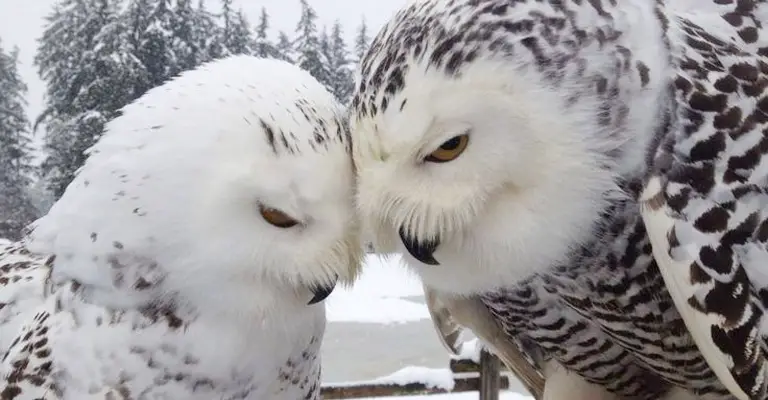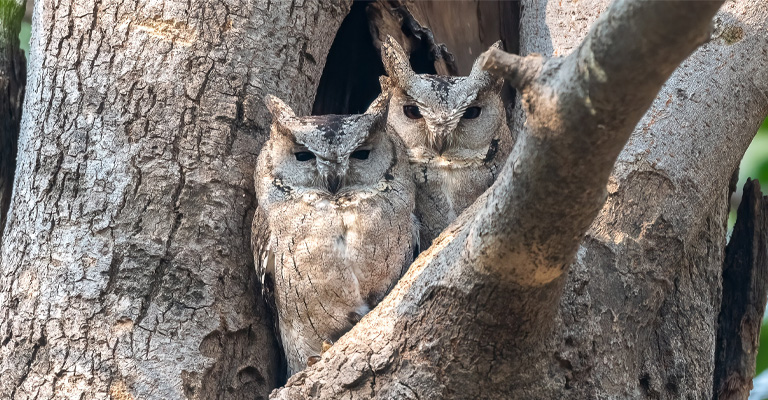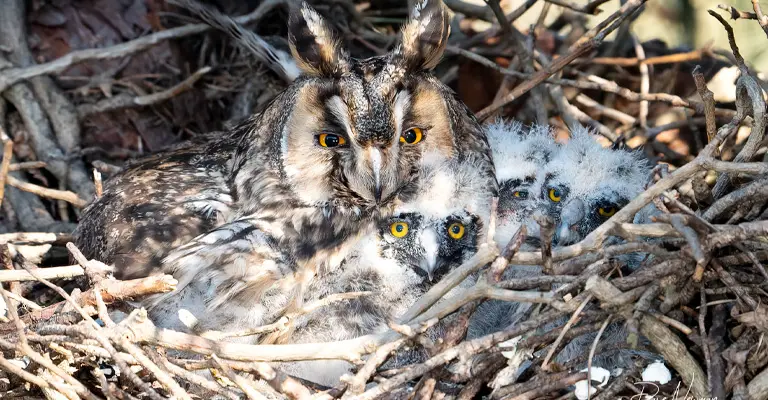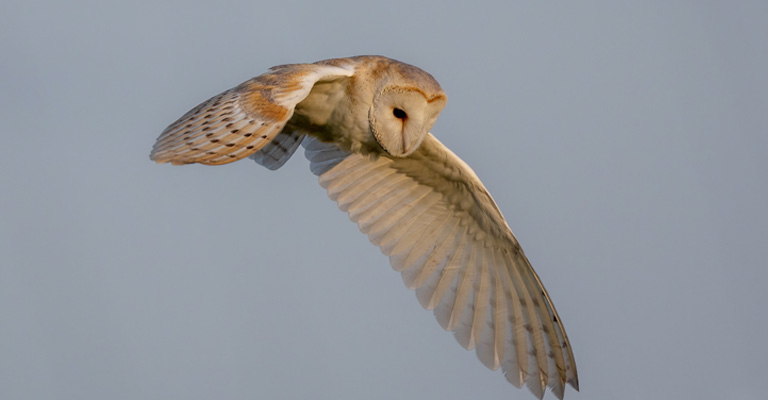From our school book, we know owls are nocturnal birds, who stay up by night. But there is more to it! You will be glazed once you know the owl’s lifestyle and contribution to the partnership.
Do owls mate for life?
We know that swans, penguins, and lovebirds are in the first queue of the answer. But what we don’t know is that birds of prey are also protective of their partner and can spend their entire life with only one of their kind.
So, the answer is yes? And owls do mate for life? You will not know it for sure until you read the end of our article. We invite you to complete our guide and learn the secrets of owl partnership.

Key Picks:
- Owls belong to the order Strigiformes and are divided into two families: Tytonidae (barn owls) and Strigidae (typical owls).
- They are generally monogamous. Their mating pairs are long-lasting.
- Some owl species like the Barn Owl are popular for their unnatural screeching calls during courtship.
- Owls communicate with their partners with different calls. It also includes hooting and hissing sounds.
- The Burrowing Owl often shares its underground burrow with other animals. They create a unique form of partnership.
- Some owl species, like the Northern Hawk Owl, are highly nomadic and may not prefer a permanent partner or nest site.
- In certain owl species, such as the Eurasian eagle owl, the female is notably larger than the male.
Do Owls Mate for Life?
The answer is not completely a yes or no. Before we pass any final judgment, we should start by learning more about owl’s mating behavior first. And trust me! It’s not that simple.
Owls Are Monogamous
Some owls, not all of them, are monogamous by nature. The greatest example of monogamous creatures is human beings. We stick to one partner for a lifetime, well mostly!
But whether owls are monogamous or not, the answer varies for different species of owl. Details below,
The Barn Owls (Tytonidae)
We know barn owls usually form monogamous pairs. They generally mate for life and stay together all year round. Both of them are highly committed to each other and share the responsibilities of hunting and raising the offspring.
The barn owls have been the point of research for many bird specialists. They have observed the barn owls for years and reached the conclusion that they remain together for many breeding seasons and reveal strong monogamous bonds.
Great Horned Owls (Bubo Virginianus)
The great horned owls also display monogamous traits. They develop long-lasting bonds with other owls and work together to raise their babies.
**Note: In the kingdom of birds, you will see the shared responsibility of raising children together is more supreme than other living creatures.
The North American researchers conducted a study in which they tracked the same great horned owl pairs for multiple years. It clearly proves their monogamous nature that last long.
Some Owls Are Serial Monogamy

We know about polygamy and monogamy! But perhaps a lot of us don’t know about serial monogamy.
It is a term that refers to the nature of moving on from one partner to another but not multiple together. In human terms, when a person moves from one relationship to another very quickly, he or she is a serial monogamous.
Some owl species also practice serial monogamy, such as the Screech Owls (Genus Megascops). Here’s an overview,
The majority of the Screech Owls promote serial monogamy. This means, they form new pairs each breeding season but may not mate for life.
Serial monogamy is strictly dominant in the Eastern Screech Owls. They find new mates every breeding season. However, they still maintain strong parental care during the current nesting period.
Polygamous Owls
There are 254 owl species in the wild (according to IOC) and only 10 of them are known to be polygamous. That leaves monogamy to be a common practice over 95% of living owls.
The Boreal Owl (Aegolius funereus) is one of the 10 owl species that practice polygamy. They generally don’t mate for life and may have different mates in every breeding season.
Reports show that different boreal owls have shown signs of polygamy and they don’t usually form long-term pair bonds.
Other polygamous owl species are,
- Eurasian Eagle-Owl (Bubo bubo)
- Tawny Owl (Strix aluco)
- Spotted Owl (Strix occidentalis)
- Short-eared Owl (Asio flammeus)
- Long-eared Owl (Asio otus)
- Northern Saw-whet Owl (Aegolius acadicus)
You also need to remember that, owls may change their nature based on the environment they live in. Such as the availability of food, the population can often affect their mating behavior.
How Do Owls Share Parental Duties?

After two owls find each other perfect, they prepare for the coming days. It starts with finding a suitable nesting place. They usually select tree cavities or isolated buildings.
Even though owls are diligent parents, the female owl takes on most of the parental duties herself, from incubating the eggs to feeding the young ones.
However, the male owl shoulders other responsibilities, especially the external ones. He hunts and brings food to the nest.
Remember that the level of parental care can be applied differently for other owl species. But it always remains shared and cooperative.
Do Owls Divorce?

A National Geographic Report shows that almost 25% of barn owls drastically find themselves in divorce at least once in their life. The barn owls in Switzerland have been observed for 24 years by many researchers.
Studies show that even though barn owls are monogamous, they have higher chances of parting away if breeding doesn’t turn out to be successful.
In Summary,
Reproduction is an important part of any living creature, including the owls. All living beings are genetically designed to reproduce and multiply, and so does the owls.
They may find mates differently and sometimes breed with different species, but the goal remains the same.
So, do owls mate for life? We hope now you have answers to this question.
Learn more about the habitat of snowy owls. We share regular guides on the avian creatures of the earth. Feel free to browse through our blog section.